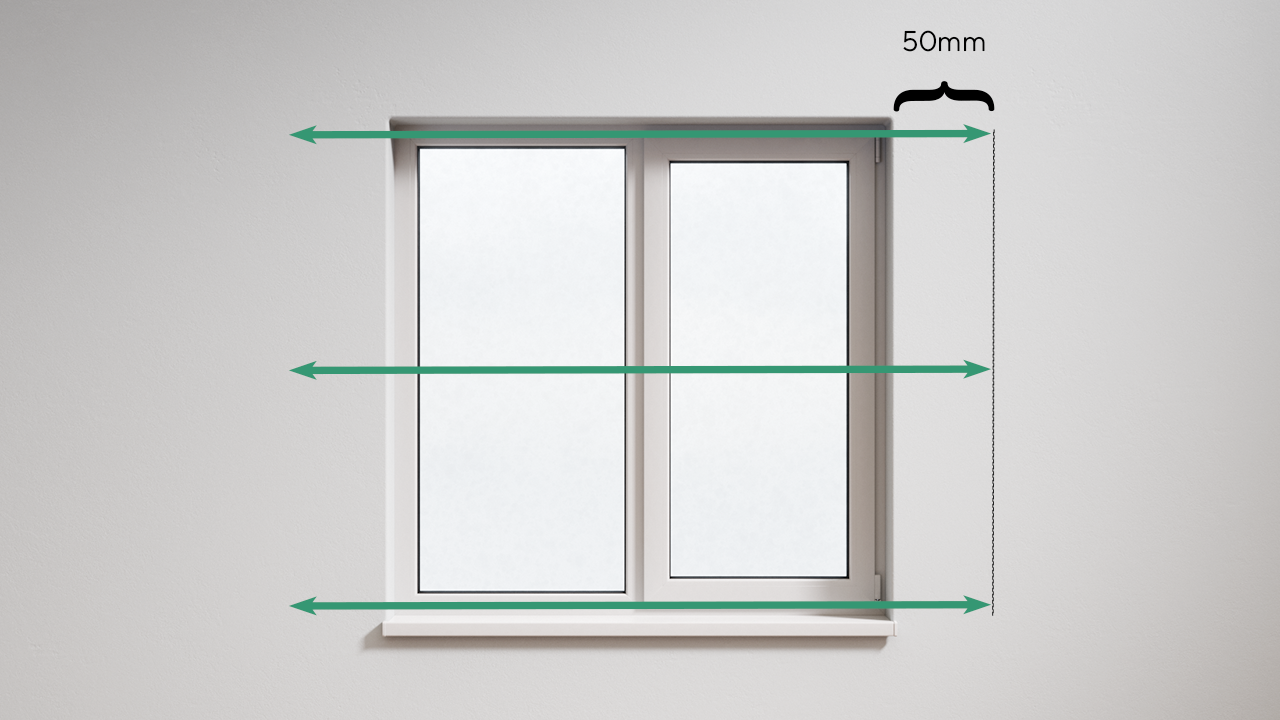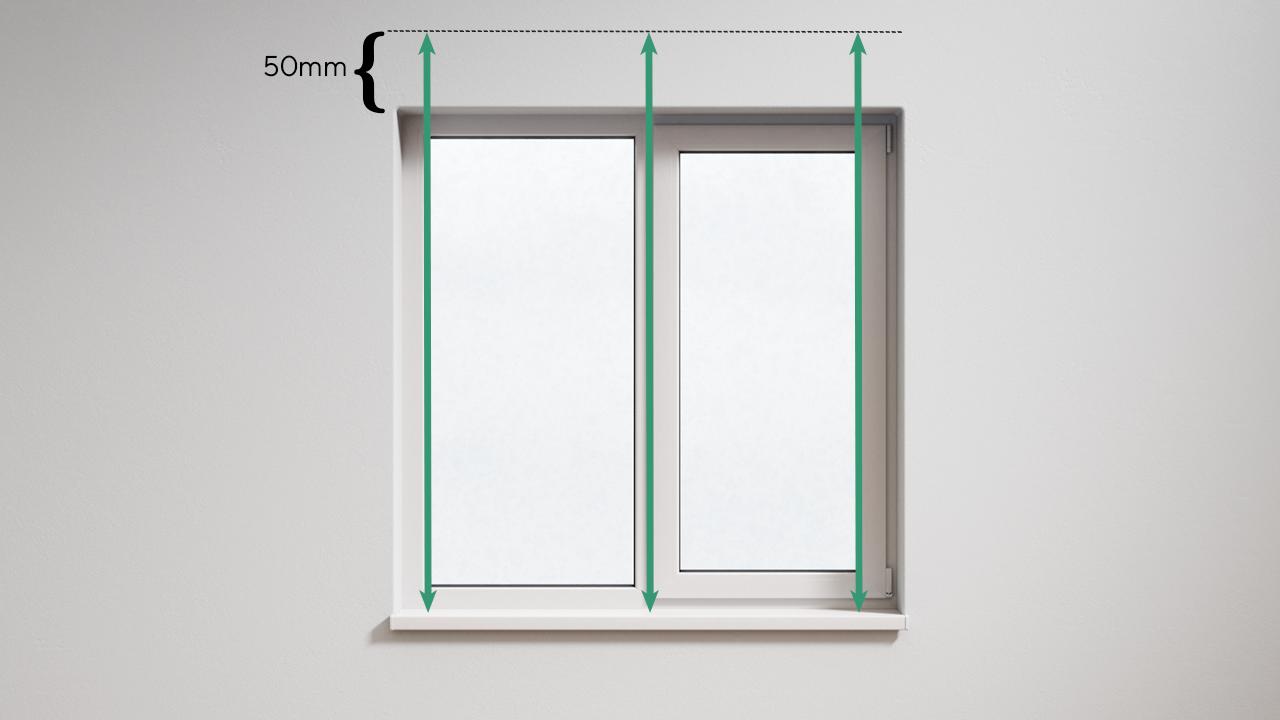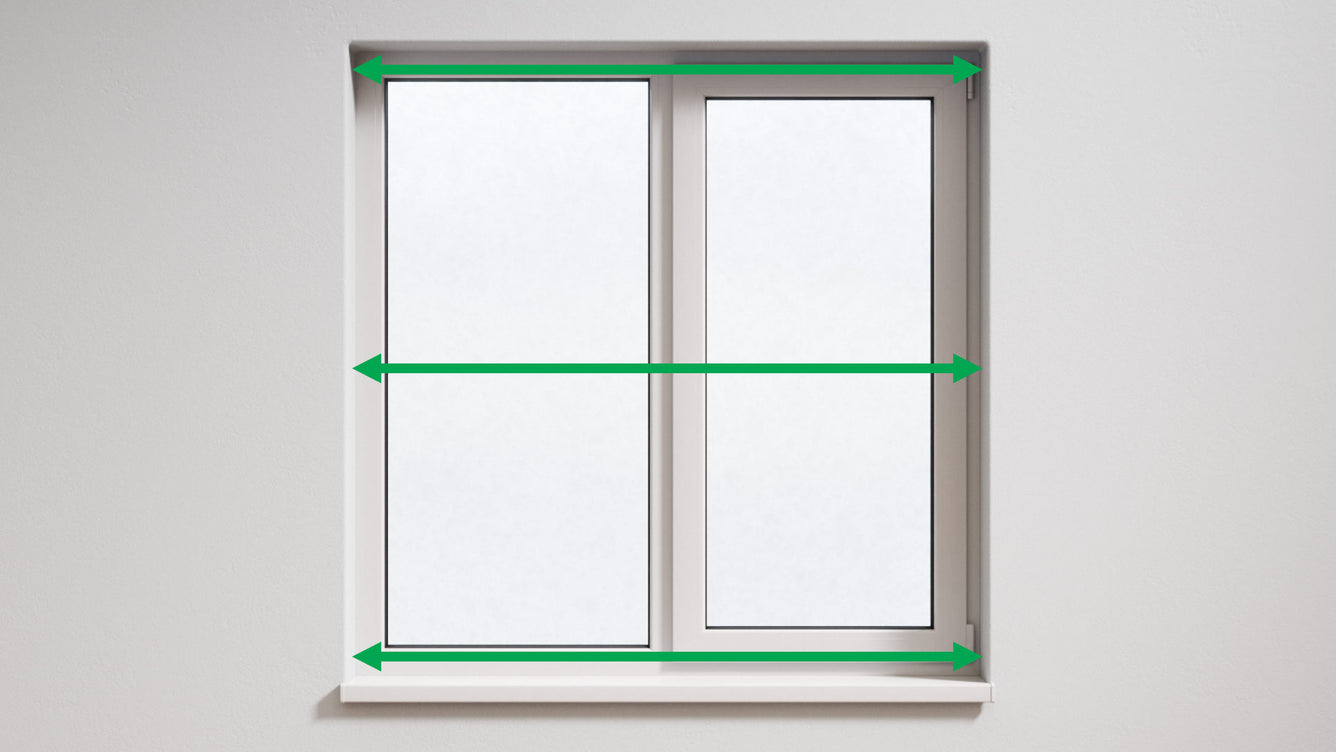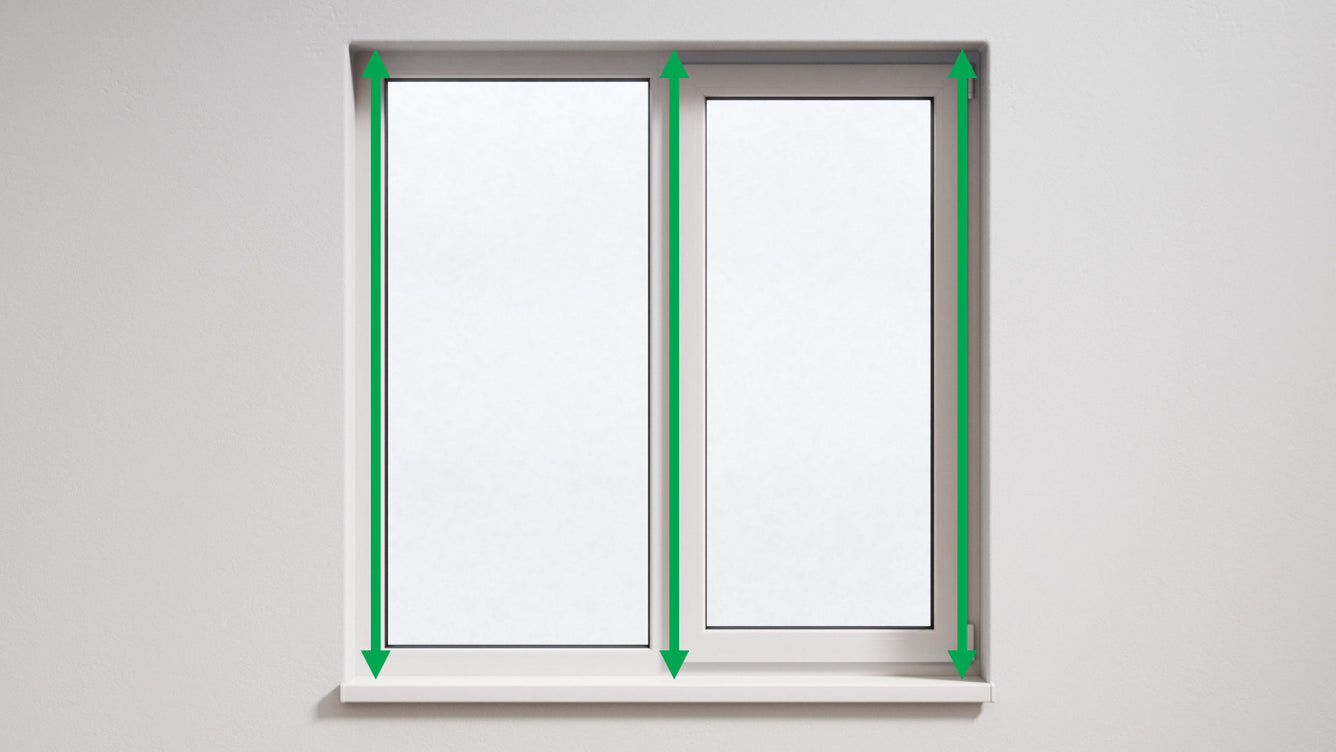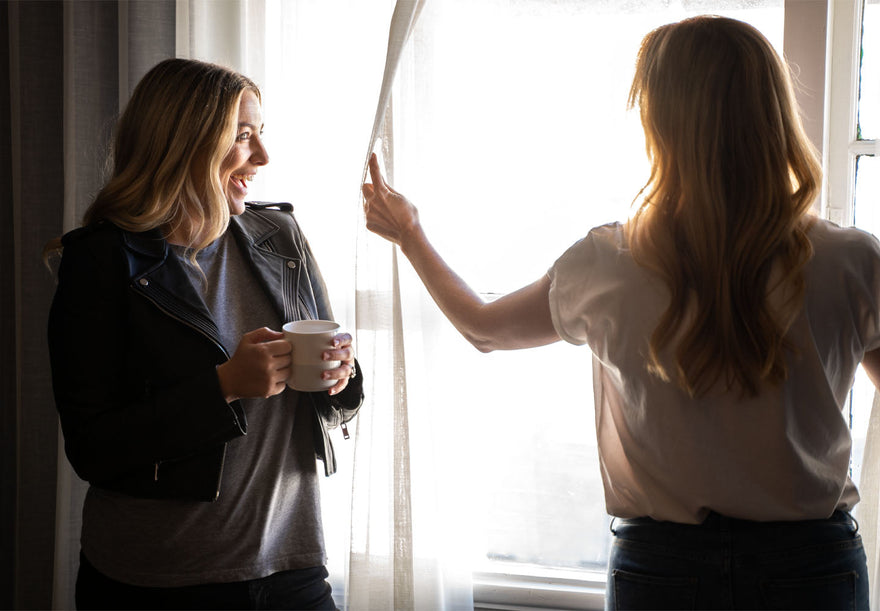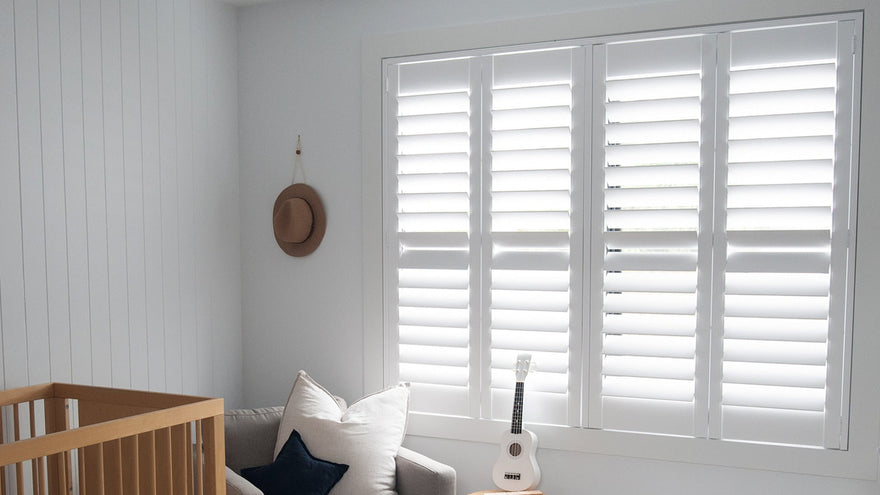1. Pick your point
If you’re planning on fitting your blinds within each of the bay window’s recesses, it’s important to be consistent in measuring from either the front edge or the rear of the recessed area but never from the midway point. This measuring point will need to be matched when installing the items provided.
When placing your order, each blind will need to be ordered separately with notes added specifying that the ordered product is part of bay configuration and advising the angle.
We’d suggest adding something like this: “This is an order for bay windows and is the left / centre / right side window. The angle of the window is (add your details) degrees.” Armed with this information, we’ll make the relevant adjustment to ensure the products we supply fit snugly in the recesses.
We’d also strongly advise choosing ‘forward roll’ during the customisation process. This will help ensure everything looks neat, there’s less chance of the fabric catching on existing window handles or such, and it also minimises any chance of fabric overlap if the fitting isn’t millimetre accurate!
Please note, with the standard adjustments, we’ll reduce the width of each blind to ensure all three butt together neatly. If you wish to have this done differently (i.e., no width deduction to the centre blind), please advise this requirement in your order notes or via a follow up email once your order has been confirmed.
1. Measure your blind
The first step is to measure the dimensions of your blind as per our standard instructions. This includes measuring the width and drop.
To measure for face fitting blinds, measure the outside width of the window, recording the exact width you want your blind manufactured. For frameless windows, we suggest extending about 50mm past the recess edges on each side.
Next measure the outside height of the window frame, starting from the point at which you’d like your blind to sit above the window, down to the point at which you’d like your blind to finish.
2. Measure for your blind
The first step is to measure the dimensions of your blind as per our standard instructions. This includes measuring the width and drop.
For a recess fitting blind, measure the width inside your window frame (in millimeters) at the top, middle, and bottom. Record the smallest measurement of the three.
Next, measure the exact height of the window recess. Again take three measurements – the left, middle and right and record the smallest measurement.
1. Measure your blind
The first step is to measure the dimensions of your blind as per our standard instructions. This includes measuring the width and drop.
To measure for face fitting blinds, measure the outside width of the window, recording the exact width you want your blind manufactured. For frameless windows, we suggest extending about 50mm past the recess edges on each side.
Next measure the outside height of the window frame, starting from the point at which you’d like your blind to sit above the window, down to the point at which you’d like your blind to finish.
Next...
As with recess fitting, the key information to obtain first is the angle each window is set on. As mentioned above, while most bay windows are set at 135-degrees (or very close to it), it’s important to check yours before proceeding. If you missed it, information on how to do this is provided in the first section of this guide.
When placing your order, each blind will need to be ordered separately with notes added specifying that it is part of bay window configuration and advising the relevant angle.
We’d also strongly advise choosing ‘forward roll’ during the customisation process. This will help ensure everything looks neat, there’s less chance of the fabric catching on existing window handles or such, and it also minimises any chance of fabric overlap if the fitting isn’t millimetre accurate!
Please note, with the standard adjustments, we’ll reduce the width of each blind to ensure all three butt together neatly. If you wish to have this done differently (i.e., no width deduction to the centre blind), please advise this requirement in your order notes or via a follow up email once your order has been confirmed.


